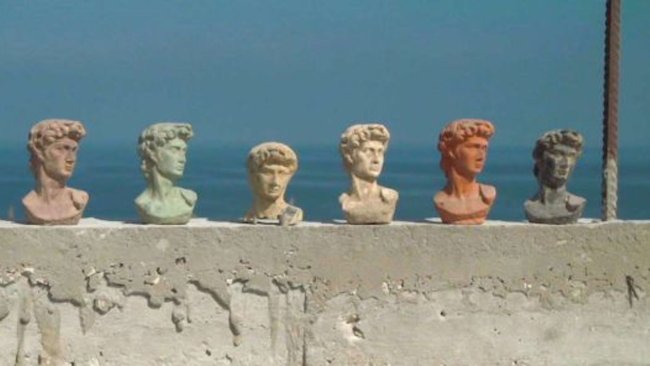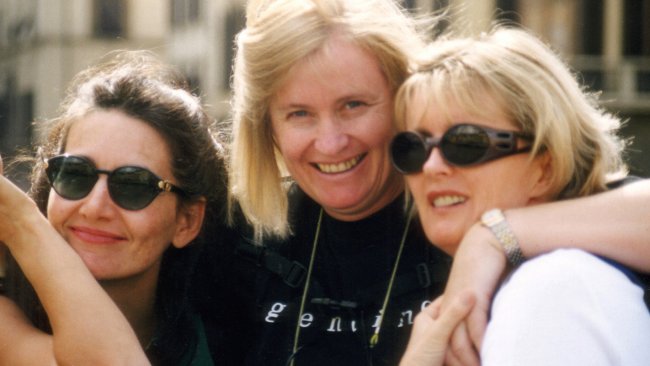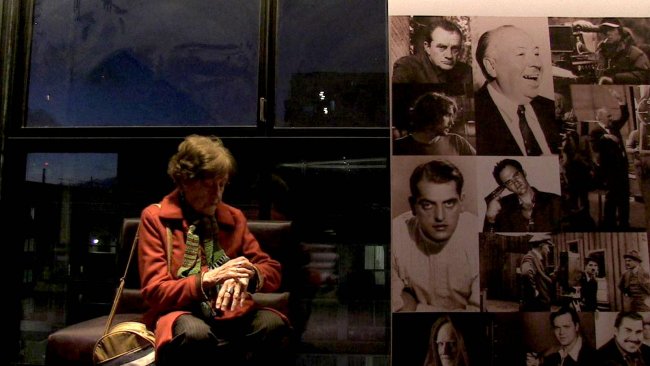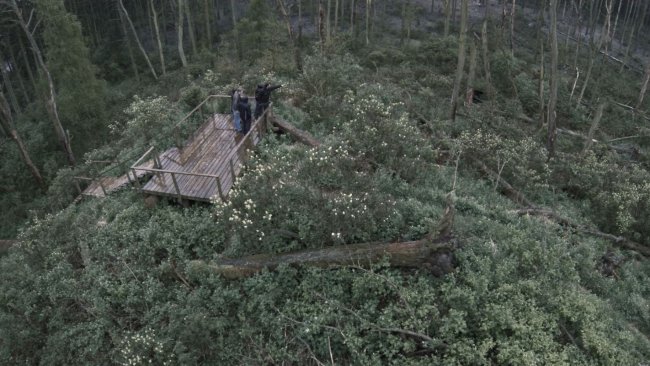Long Day's Journey into Night
[…] The lighting is always concentrated, focused, oriented: in the night of memory and imagination, we see only the points that concern the main character’s quest. In a way, Luo Hongwu’s eyes and mind determine the range of the visible, and in doing so define the subjectivity that counterbalances the intensity and the plurality of the reality we/he face/s.
[…] Memory is a liquid and indeterminate matter, for which the moving images are perfectly fitting, because they allow us to grasp without defining the emotive core of memory, where the past and imagination are not mutually exclusive.
[…] It would not be pretentious to say that Luo Hongwu’s journey into the night of daydreaming is nothing but a journey into the medium specificity of cinema.
Text: Giuseppe Di Salvatore
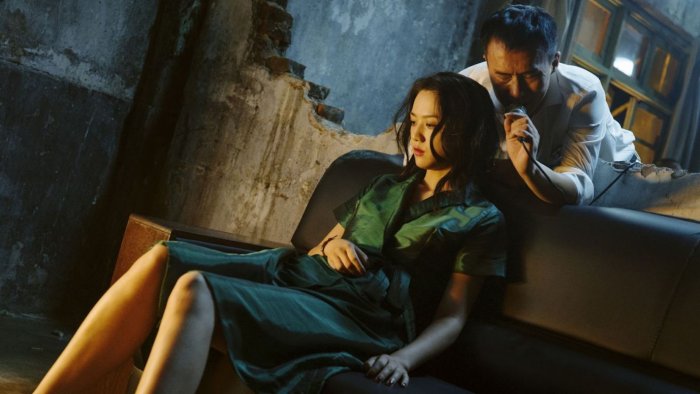
After the amazing journey through the Chinese region of Kaili, with Kaili Blues (2015), Gan Bi has now explored the night, which means the intimate landscape of memory, of dreams, of cinema itself. With Long Day’s Journey into Night, we are still in the Kaili region, but the almost documentary flavour of the images and the mass of laypersons of Kaili Blues has been replaced with highly staged scenes and professional actors, even popular stars like Sylvia Chang or Wei Tang. For this impressive upgrade of production means, Gan Bi was able to count on the support and the esteem of an artist like Hou Hsiao-hsien, whose filmic style seems to have left some traces here, at least in the aesthetic appeal of the highly accurate framing. As for the use of mirrors, the element of water, and the nostalgic and lyrical theme of the search for a lost lover, one cannot help but think of Wong Kar-wai’s infamous In the Mood for Love (2000); and of Apichatpong Weerasethakul’s slow movement of the camera, or of David Lynch’s hallucinated vision of the night, certainly of Andrei Tarkovsky’s Stalker (1979) for the sense of astonishment in exploration, and finally of Alfred Hitchcock’s Vertigo (1958) – as Gan Bi himself has admitted – for the obsessive attraction for a phantasmal woman.
Searching for a new cinematic language
I want to say it loud and clear – this exercise of finding influences and sources of inspiration is destined to remain sterile in the case of the 29-year-old officially untrained Chinese filmmaker. Gan Bi is a passionate cinephile and, in searching for a cinematic language that breaks with the Chinese tradition of filmmaking, finds his reference points in South-Asian or European cinema. The peculiarity of this enfant prodige is to have been able to create an original language that already imposes itself as a reference – at least for young Asian film talents like Qiu Sheng (Suburban Birds, 2018) or Edmund Yeo (Aqerat, 2017) (both have acknowledged this in their interviews with Filmexplorer). A brief analysis of various aspects of Long Day’s Journey into Night will be useful in highlighting the features of Gan Bi’s cinematic language.
Intensity and plurality of reality
Within the eccentric economy of a journey that wanders towards the vagueness of the past and the anticipations of imagination, the slow movement of the camera has a precise purpose. Its role is neither panoramic nor contemplative: insofar as the focus of the action is often slightly displaced from the perspective of the moving camera, its movement favours a lateral vision, which gives us the impression that the reality is always larger than what we perceive of it. Moreover, the movement is often instrumental in shifting from the perspective from one character to another, thereby installing a multiple perspective that breaks the linearity of the story. In short, intensity and plurality characterise the reality that we face in the movie.
Subjectivity through lighting
This feature – that is similarly present in Kaili Blues – contrasts with the very special work on the lights, which instead constitutes the specificity of Long Day’s Journey into Night. The fact that the scenes are highly staged reinforces the fictional dimensions of a story that is systematically nourished by a symbolic discourse made of clocks, mirrors and wagers, but this fictional and symbolic level is anchored to a strong subjective point of view, which is mainly expressed by the absence of diffuse light. The lighting is always concentrated, focused, oriented: in the night of memory and imagination, we see only the points that concern the main character’s quest. In a way, Luo Hongwu’s eyes and mind determine the range of the visible, and in doing so define the subjectivity that counterbalances the intensity and the plurality of the reality we/he face/s.
Memory, dream, and cinema: a liquid matter
These two aspects of the aesthetic of Long Day’s Journey into Night are important to convey – and essential for us to understand – the symbolic discourse, and the words of both the voice over and the dialogue (somehow inspired by Paul Celan’s Pavot et mémoire, 1952). They constitute more than an atmosphere; they draw a poetic landscape that we could call hyperrealist subjectivity, and that already precisely expresses the themes of memory, the past, dream and imagination. In this respect, this film is a perfect demonstration of Walter Benjamin’s original idea of how memory has to be sharply distinguished from any photographic souvenir. Memory is a liquid and indeterminate matter, for which the moving images are perfectly fitting, because they allow us to grasp without defining the emotive core of memory, where the past and imagination are not mutually exclusive. The reflection on the connection between memory and dream slides into a reflection on the specificity of cinema. It would not be pretentious to say that Luo Hongwu’s journey into the night of daydreaming is nothing but a journey into the medium specificity of cinema.
The experience of time between eternity and transiency
We don’t need to highlight the symbolic function of the clocks in the film to stress how much this journey is strongly focused on, and nourished by, a particular experience of time. The nostalgic element of being turned to the past is mixed up with the fanciful figure of the woman, vividly present in imagination and constantly escaping into an indeterminate future. Luo Hongwu’s will to restore the past expresses the need for resolving and dominating time, a longing for eternity which contrasts with the transient and ephemeral spirit the woman is comprised of. If this struggle between eternity and transiency is resumed in the finale by the two symbolic items of the broken clock and the burning firework, our experience of the time in the film describes a third dimension, where the past, present and future conflate in a transversal dimension of time. In the first part of the film, this dimension is represented through the fragmentation of pieces of reality and imagination that are presented in a crescendo of proximity – and here the editing of the film serves to perfectly create this sensation of a scattered world, while in the second part of the film, through a dream that seems to coincide with the projection of a 3D film, the age of dream accomplishes the final conjunction of past, present and future in one liquid element that is neither eternal nor transient.
The immersive function of the 3D long shot
I wanted to anticipate the discussion of the already infamous 1-hour-long 3D shot of the second part of Long Day’s Journey into Night with this reflection on time, for it is important to stress how Gan Bi’s use of 3D and the long shot have a precise function. They don’t work as formal experiments as such (even if our putting on of the 3D glasses in the middle of the projection together with the main character doing the same in the film is certainly an unprecedented dispositive), but they serve to increase the sense of immersion in what I called a third dimension of time, a dimension that solves the conflict between eternity and ephemerality, and that reflects the distance between the man and the woman. The cinematographer David Chizallet (discovered by Gab Bi through the vision of Mustang – Deniz Gamze Ergüven, 2015) joins Yao Hung-I and Jingsong Dong to realise this work of prowess, that ultimately astonishes us for its perfect coherency with the meaning of the story that Gan Bi tells us. Cinema is daydreaming, and this long shot pushes us to the core of the magic of cinema and daydreaming. Only in this special dimension where day and night conflate, the dream of an impossible love become possible or – one would have still the desire to say – real.
This article contains a third-party video. If you would like to watch the video, please adjust your settings.
Info
Long Day’s Journey into Night | Film | Bi Gan | CHN-FR-TWN 2018 | 132’ | Geneva International Film Festival 2018
First published: November 10, 2018
